Mudras & Hand Symbolism--the
Power of Mudras Part 2 : |
MUDRAS & HAND SYMBOLISM--THE POWER OF MUDRAS PART 2 : HAND MYSTERIES
Before we begin discussing mudras, let us first consider some interesting topics concerning hands. This and the following article will be devoted to hand mysteries, symbolism, esotericism, signs, and beliefs. Although our treatment of these subjects may be inadequate, from the scholarly point of view, the lay person may find them interesting and we especially dedicate this work for their peruse.
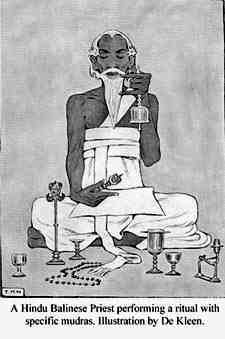 The miraculous
hands--we usually take them for granted and do not see how invaluable they
are to us. We only miss their use should a mishap befall them--just like
everything else. In the absence of hands civilizations would not have been
built. No progress would have been made in our social, industrial, technological,
and spiritual life. Human hands are partly responsible for our evolutionary
growth from our past animal, primitive state to our present high-tech era.
The hands are a projection of our soul-desire to interact and function on
the physical plane, and it took million of years for this desire to manifest
in the three-dimensional state. Prior to that, during the involutionary cycle,
the creature called man lived in an etheric state and with a form devoid
of any bodily appendages as recounted in Blavatsky's "Secret Doctrine."
The miraculous
hands--we usually take them for granted and do not see how invaluable they
are to us. We only miss their use should a mishap befall them--just like
everything else. In the absence of hands civilizations would not have been
built. No progress would have been made in our social, industrial, technological,
and spiritual life. Human hands are partly responsible for our evolutionary
growth from our past animal, primitive state to our present high-tech era.
The hands are a projection of our soul-desire to interact and function on
the physical plane, and it took million of years for this desire to manifest
in the three-dimensional state. Prior to that, during the involutionary cycle,
the creature called man lived in an etheric state and with a form devoid
of any bodily appendages as recounted in Blavatsky's "Secret Doctrine."
At least one ancient philosopher acknowledged the worth of the human hands: Aristotle called it the "organ of organs, the instruments of instruments." As one of the Karmaindriya, hands are the active agents of the cerebral system, and by extension, the human soul. It is what Immanuel Kant called "the visible part of the brain." The nature of our thoughts and emotions are reflected in ideodynamic movements of the hands that are normally visible with their gestures but at times goes unnoticed, or is invisible to the naked eye. Proof of this may be found in the occult art of dowsing where the imperceptible movement of the hand as motored by nerve impulses causes a pendulum to sway under direction of an unseen subconscious intelligence--the pendulum merely acting as an amplifier for the conscious aspect of the psyche.
Benjamin Walker in his book, "Body Magic," notes that no other part of the human body is so intimately related to human behavior than the hands. Hand movements are expressive of human thoughts, character, emotions, and attitudes. Graceful, flowing movements reveal a person who is generally poised and tranquil, a person with culture and refinement. In men, when these gestures are too exaggerated, or when they become too artificial, it indicates effeminate tendencies. A person with a dignified, noble character makes hand gestures quite differently from a person who is debased and boorish in nature. Aggressive hands can be seen by their violent and abrupt movements; just as materialistic subjects are known by their heavy, pendulous, impassive hands. A fidgety hand is reflective of a fidgety mind--someone with a nervous disposition and lacking a positive self-image. Such a person knows not how to control his energy. He releases it through unconscious drumming of his fingers and fiddling around with any available object. Limp hands betray the owner's lack of goals, self-confidence, and zeal for life. Individuals who have the habit of hiding their hands and closing their palms with their fingers reveals that they are secretive, cautious, and perhaps stingy. Hiding the hands behind the back have several possible meanings among which are prudence, restrain and observation or inspection. It is a diplomatic gesture and most nobles often unconsciously assume it.
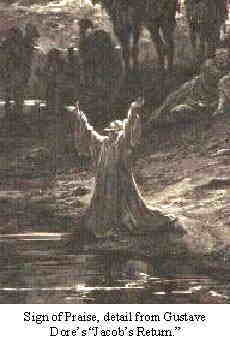 Man not only
differ from animals by possessing reason, he also differ from them by possessing
hands that are able to fabricate things, to convey his intentions, to communicate
his thoughts and feelings. Anthropoids may possess hands, but they lack a
superior reason to take full advantage of them. Dolphins and other cetaceans
may be equal or superior to man in spiritual unfoldment--according to modern
New-Age thought--yet, without hands they do not have the ability to manifest
certain forms of creativity. Perhaps they do not need to, it is not for us
to debate over this here. We know that every life-form has its own uniqueness;
and Man, in his own distinction can rightly be called "the builder" endowed
as he is with the tools--his hands, to manifest his creative will. Herein
lies the blessing or curse of man. With his hands he may build heaven on
earth, or he may use it destructively to manifest chaos and anarchy--a hellish
pandemonium that stalls evolutionary progress.
Man not only
differ from animals by possessing reason, he also differ from them by possessing
hands that are able to fabricate things, to convey his intentions, to communicate
his thoughts and feelings. Anthropoids may possess hands, but they lack a
superior reason to take full advantage of them. Dolphins and other cetaceans
may be equal or superior to man in spiritual unfoldment--according to modern
New-Age thought--yet, without hands they do not have the ability to manifest
certain forms of creativity. Perhaps they do not need to, it is not for us
to debate over this here. We know that every life-form has its own uniqueness;
and Man, in his own distinction can rightly be called "the builder" endowed
as he is with the tools--his hands, to manifest his creative will. Herein
lies the blessing or curse of man. With his hands he may build heaven on
earth, or he may use it destructively to manifest chaos and anarchy--a hellish
pandemonium that stalls evolutionary progress.
Understanding this religiously, man "the builder" constructs magnificent temples to worship his gods or representatives of his embodied ideals. That the hands may sometimes symbolize excessive mundane activity and focus to the detriment of spiritual unfoldment can be understood from the esoteric saying that the true spiritual aspirant ought to spend his time and forces building a temple "not made with hands." This in fact is what Freemasonry, one of the "esoteric brotherhoods" is all about. Though the body is regarded as a temple of the soul not made by mortal hands, a higher house of God, the Holy of Holies, the Sanctum Sanctorum, is meant in this spiritual precept. The brothers of this august fraternity through rites, rituals and ceremonial initiations are taught how to utilize carpenter's tools, esoterically understood, to build this fabulous celestial House of God in a spiritual dimension--the true "Temple of the Spirit," or to be more precise, the Causal body which relates to the many mystical symbols representing the Higher Self such as the Ark of the Covenant, the candelabra, the Holy Grail, the Philosopher's Stone, etc.
The Causal body is the lotus that forms the seat of every enlightened being as portrayed by Buddhas and Bodhisattvas in Buddhist iconography. Though the Causal body is not built by mortal hands, personal effort in its fabrication is still required by worship, devotion, service, and spiritual exercises. We are essentially told in every religion that salvation lies in our own hands. The higher Intelligences will only assist us if we first help ourselves. No external aid is forthcoming if we refuse to take responsibility for our own liberation, salvation, enlightenment, or evolution. The saying of Jesus that heaven is "at hand," or approaching, may be construed to mean that heaven lies in our own grasp-"in our own hands," if we allow it to be so by working for it, by awakening to the Truth, to a higher awareness and consciousness. It entails personal responsibility. The New Jerusalem, King Solomon's Temple, the Causal body, the Diamond body, or whatever you may call that evolving spiritual body of the microcosm, must be perfected and made manifest on the physical plane through personal effort. Doubts of our own divine, heavenly nature prolongs the sleep of the ages and prevents us from cooperating with the Divine Architect. Later on in these series of articles we will apply the above precept literally and use our hands as mudras to awaken and unfold our divine potentials like the blossoming of a lotus flower.
Anatomy of the Hand
What is a hand? Below we quote from the Funk and Wagnall's Encyclopedia that explains this comprehensively :
The hand is explained to be a,
"terminal portion of the arms or anterior limbs of humans and other primates, especially adapted for grasping. The grasping appendages of other mammals and lower forms of animals are sometimes called hands in order to distinguish them from the feet of the hind limbs, but true hands appear only in the primates."Superficially the hand consists of a broad palm attached to the forearm by a joint called the wrist. At one side and at the
outer edge of the palm are five digits, the thumb and four fingers. The thumb in humans is articulated so that it can be brought opposite to the fingers and thus be employed for grasping small objects. The fingers themselves can be folded forward over the palm for the holding of objects. The chief difference between the hands of humans and those of the other primates is that the thumbs of the latter cannot be opposed to the fingers.
"The human hand has 27 bones: the 8 bones of the carpus, or wrist, arranged in two rows of four; the 5 bones of the metacarpus, or palm, one to each digit; and the 14 digital bones, or phalanges, 2 in the thumb and 3 in each finger. The carpal bones fit into a shallow socket formed by the bones of the forearm.
"The movements of the human hand are accomplished by two sets of muscles and tendons: the flexors, for bending the fingers and thumb, and the extensors, for straightening out the digits. The flexor muscles are located on the underside of the forearm and are attached by tendons to the phalanges of the fingers. The extensor muscles are on the back of the forearm and are similarly connected. The human thumb has two separate flexor muscles that move the thumb in opposition and make grasping possible."
Four fingers and a thumb on each hand is the norm. There are cases though, when a person may have extra fingers or thumb on one or both hands. Technically, this anomaly is called polydactylism. What causes this is a mystery. According to one of the current scientific theories is that this is an atavistic condition, a genetic remnant of a bygone age that appears from time to time for an unknown reason. This anomaly not only occurs in human beings, they also appear in animals, and this the writer of this article can vouch for as he is well familiar with it personally. In his youth the writer once reared domestic chickens in his parents' farm--one had an upturned hind toe. Other than that she had the normal amount of toes on each foot. However, all of her progeny were polydactylies. They boasted five toes on the terminal part of each leg. According to popular superstition, extra digits in a hand is a sign of great good or evil. An extra finger on the right hand is supposed to bring good luck, ill-fortune if on the left. Six fingers on both hands indicates that its possessor will be famous or infamous in some way, like Gath, the Philistine giant mentioned in the Bible (1 Chr 20:6).
How does the occult scientist explain polydactylism? From the metaphysical
point of view, we know that the physical body is a replica of the etheric
body which is the blueprint of its physical counterpart. The structure of
the etheric body is amendable to the will of the Higher Self and to a lesser
extent to the psychological condition of the lower psyche. If a pregnant
mother were shocked in some way, for instance, this could have a disastrous
effect on the fetus or embryo
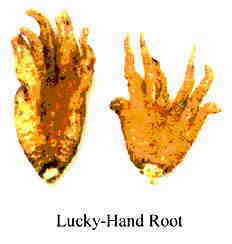 disfiguring
it in some way. Embryonic hands could possibly acquire extra digits as a
result of its host's sudden experience of fright or terror. Another explanation
of polydactylism is that for karmic reasons, the Higher Self manufactures
a vessel in accord with the soul's spiritual needs. Whatever physical deformities
it manifests in the physical form is for the teaching of the soul some required
lesson. However, how does that apply to animals without a "soul"? As we have
stated above the etheric body as blueprint of the physical form may be altered
by the will. At a lower level of consciousness the imagination play a role
in influencing the matrix that a higher intelligence has formed. The subconscious
mind is likewise impressionable. What it perceives in a constant fashion
it eventually outpictures in physical form. This is how creatures evolve
camouflages on their physical forms. But how do these principles relate to
our question above? In the case of animals, the evolution of their physical
form and consciousness aspects are directed by what is called "group-spirits"
in occultism. These angelic spirits are always experimenting in producing
forms that would best adapt to the environment so that the Law of Evolution
may be best fulfilled. So abnormalities in nature are experiments done by
the Directors of Nature. However, as the tale of Jacob (See Genesis) of how
he influenced the nature of the wool of the sheep under his care would indicate,
animals may likewise influence the form, or color of their own progeny through
the power of their subconscious minds. Apropos to this, shamans are said
to have the occult ability to shape-shift into various forms, just like the
Greek god Proteus. But this most likely concerns the astral body.
disfiguring
it in some way. Embryonic hands could possibly acquire extra digits as a
result of its host's sudden experience of fright or terror. Another explanation
of polydactylism is that for karmic reasons, the Higher Self manufactures
a vessel in accord with the soul's spiritual needs. Whatever physical deformities
it manifests in the physical form is for the teaching of the soul some required
lesson. However, how does that apply to animals without a "soul"? As we have
stated above the etheric body as blueprint of the physical form may be altered
by the will. At a lower level of consciousness the imagination play a role
in influencing the matrix that a higher intelligence has formed. The subconscious
mind is likewise impressionable. What it perceives in a constant fashion
it eventually outpictures in physical form. This is how creatures evolve
camouflages on their physical forms. But how do these principles relate to
our question above? In the case of animals, the evolution of their physical
form and consciousness aspects are directed by what is called "group-spirits"
in occultism. These angelic spirits are always experimenting in producing
forms that would best adapt to the environment so that the Law of Evolution
may be best fulfilled. So abnormalities in nature are experiments done by
the Directors of Nature. However, as the tale of Jacob (See Genesis) of how
he influenced the nature of the wool of the sheep under his care would indicate,
animals may likewise influence the form, or color of their own progeny through
the power of their subconscious minds. Apropos to this, shamans are said
to have the occult ability to shape-shift into various forms, just like the
Greek god Proteus. But this most likely concerns the astral body.
 One other anomaly
are webbed hands. Although not too common, this atavistic characteristic
does appear from time to time in human beings. In Buddhism, webbed hands
and feet are one of the marks of a Buddha; this, however, should not be construed
in a literal sense. Gaskell, the author of the "Dictionary of all Scriptures
and Myth" interprets this as the " . . . as yet, fettered organs of action,"
or in other words, the emotional/mental glamour and illusions working through
the senses, hands, feet, and sexual organ. Gaskell's interpretation actually
does not make sense when we consider that a Buddha is supposed to be enlightened
and to have transcended such mortal errors. A better interpretation in our
opinion would be that webbed hands signify spiritual service in the cosmic
sea of life.
One other anomaly
are webbed hands. Although not too common, this atavistic characteristic
does appear from time to time in human beings. In Buddhism, webbed hands
and feet are one of the marks of a Buddha; this, however, should not be construed
in a literal sense. Gaskell, the author of the "Dictionary of all Scriptures
and Myth" interprets this as the " . . . as yet, fettered organs of action,"
or in other words, the emotional/mental glamour and illusions working through
the senses, hands, feet, and sexual organ. Gaskell's interpretation actually
does not make sense when we consider that a Buddha is supposed to be enlightened
and to have transcended such mortal errors. A better interpretation in our
opinion would be that webbed hands signify spiritual service in the cosmic
sea of life.
One of the mysteries of nature regarding human hands is that there are plant-roots resembling them. These roots originate from several species of the Dactylorhiza orchids and is commonly called "Lucky-Hand Root." The number of digits vary from 3 to 10. It is normally carried in a pouch as an amulet or all-round lucky charm. Although the subject of charms and hand amulets are fascinating, they will not be discussed here; we will deal with them in another article.
The brain has more sets of nervous pathways leading to the hands than to any other part of the body. In stress and anxiety, the temperature of the hands increases and it readily becomes sweaty. Lie-detectors take advantage of this phenomenon by measuring the differences in the psychogalvanic skin response of subjects during their interrogation.
It is said that hands make more than a thousand different movements every day. A single repetitive motion of the hand may lead to serious injuries, as in the case of Carpal Tunnel Syndrome (CTS). This is the swelling of the tendons in the carpal tunnel and the compression of nerves resulting in numbness in the hand. Hands, especially the fingernails, are indicators of one's state of health. For instance, horizontal ridges on the fingernails may indicate malnutrition; pitted nails may be symptomatic of psoriasis; blue nails show problems in the circulation.
Function of the Hands
Hands may be used to bless or curse; to build or destroy, to harm or heal.
It all depends upon how well man attunes himself and understands the Will
of the Cosmos or his True Self. This reaching-out to a higher consciousness
is symbolically depicted in the famous fresco painting by Michaelangelo upon
the ceiling of the Sistine chapel in Rome. "Genesis: the Creation of Man"
as it is called, shows Adam reaching out his hand attempting to touch the
fingers of his Maker.
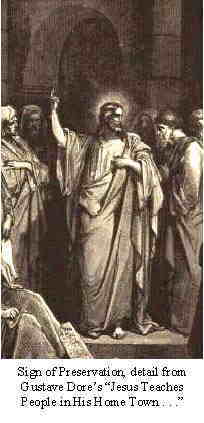
The banishment from the Garden of Eden or paradise is symbolic of man's descent upon a lower level of consciousness where he unwittingly lost contact with higher intelligences and alternate realities and thus forgot his spiritual roots and purpose of being. Just like Persephone who was abducted by Hades and brought to the netherworld, the soul of man is chained to a dark materialistic consciousness by his ignorance. Ceres, the mother of Persephone, or man's Christ nature ever seeks to redeem her or the human soul from the clutches of avidya, ignorance. Adam (the generic term for man), after consuming the fruit of the Tree of Knowledge was faintly aware of the existence of the Tree of Life of which he was previously oblivious. The "Lord," anxious that man would not consume this fruit prematurely, banished him from Paradise. Man's subsequent search for immortality became a powerful passion that millions of deaths have not diminished. Man must look in the proper direction for that which he now seeks. It is not to be found in the glamorous and illusory worlds of lower psychicism and materialism. Until the false ego and all that is mortal within man are given up, until all of that false sense of egoic grandeur be displaced by the expression of the Higher Self, man will not begin to sense the immortal life running through his course and subtle veins and realize that immortality is already his as a Cosmic inheritance.
As man is a reflection of God and the Universe, a veritable microcosm, so hands can well be said to be a miniature microcosm representing the physical man as a whole. For instance, we have the five elements represented in the fingers just as we have all of the organs in the body reflected in various parts of the hand. This is basically the science of reflexology originated in China by the ancient Taoists physicians and the practitioners of alchemy. These ancient doctors discovered that massage or pressure upon specific points of the feet and hands benefit other parts of the body and promote good circulation of the chi, or life-force.
Hands are often "read" for divinatory purposes and for determining the inner nature of their possessor. In China such analysis of the hand is called Shou Hsiang. In the West it is known as "palmistry" or "cheiromancy," or to give its more accurate name, cheirogrammeomancy. Related to this is "cheirogrammeognomy," "cheiromorphognomy," and "cheiromorphomancy," all of which concerns the study of the hand--its shape, features, lines, and qualities.

The lines on the palms of the hands are believed in the occult science of
palmistry to designate a person's character and changing fate. In all systems
of palmistry--Chinese, Hindu, and Western, certain portions of the hand and
fingers represent the celestial bodies--the sun, moon, and planets. Palmistry
tells us that the hands come in various shapes: "square," "conical," "spatula,"
etc; each shape with its own special meaning. The fingers likewise come in
assorted sizes hinting of the owner's personal psychological constitution.
Lines or marks are to be found on the palms of the hand, and throughout life
these are constantly changing in formation. Why lines appear in the hands
and may reveal a person's character and probable future is a mystery that
remains to be solved. One theory is that the lines are caused by nervous
energy or fluid coursing through the physical body leaving its imprint, its
indelible marks on the sensitive, impressible palms of the hands. It is
 believed that
the nature and strength of the marks are determined by the intensity of this
vital-fluid which in turn is caused by the inherent qualities of the indwelling
soul. The regulator of this nervous-energy appears to be the soul-impressed
brain. To explain this in another way: first, the soul influences the brain
with its innate characteristics, its character, then the brain releases and
regulates the nerve-energy flowing through the body which is recorded on
the sensitive portion of the hands appearing as lines and identifiable marks.
This theory is logical but it does not explicitly explain how one's "fate"
may be indicated by the etches made upon the palms of the hands. Perhaps
we could explain this simply by saying that one's character, beliefs, and
attitudes determine to a large extent one's so-called fate, and so by knowing
a subject's psychic make-up it is possible to know his or her probable future.
For instance, if a subject has a slothful character, we could predict that
he or she would experience financial problems and poor health. This principle
is based upon the Law of Cause and Effect and is nothing mysterious.
believed that
the nature and strength of the marks are determined by the intensity of this
vital-fluid which in turn is caused by the inherent qualities of the indwelling
soul. The regulator of this nervous-energy appears to be the soul-impressed
brain. To explain this in another way: first, the soul influences the brain
with its innate characteristics, its character, then the brain releases and
regulates the nerve-energy flowing through the body which is recorded on
the sensitive portion of the hands appearing as lines and identifiable marks.
This theory is logical but it does not explicitly explain how one's "fate"
may be indicated by the etches made upon the palms of the hands. Perhaps
we could explain this simply by saying that one's character, beliefs, and
attitudes determine to a large extent one's so-called fate, and so by knowing
a subject's psychic make-up it is possible to know his or her probable future.
For instance, if a subject has a slothful character, we could predict that
he or she would experience financial problems and poor health. This principle
is based upon the Law of Cause and Effect and is nothing mysterious.
Terence Dukes in his book, "Chinese Hand Analysis," tells us that the hands may be analyzed at different levels, not only from its physical aspects, but from its psychic constitution as well :
"Because of the principle (Li) of transmutative levels, it also became possible to interpret a hand from its energy flow rather than its physical attributes, and the 'psychic' element (as we would call it today) became accepted. The interpretation would differ depending on the level of paradigmatic and hermeneutical ability of the analyst. From observed hand patterns, a Taoist analyst may be able to tell that you have rebuilt your home, a Chen-Yen Buddhist that your grandmother's spirit was watching over you, and a Buddhist-cum-Taoist that your liver was overworking! The well-trained cheirologist could tell you all three and more, for such training implies trans-level understanding and not just prognostic ability."
Whether a coincidence or not, the palms show a significant number. The figure nineteen in Arabic numerals may be found etched on them. Using the terminology of palmistry, the figure consists of the "life," "heart," and "head" lines. Nineteen is definitely esoteric being one of the two numbers discovered thus far with which the Quran, the holy book of Islam is structured.
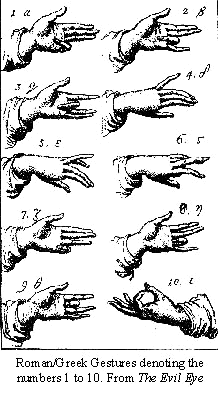 There are several
million nerve cells on each fingertip and these are extremely delicate. The
surface of these fingertips are covered by ridges called rugae, which are
developed in the fetus during pregnancy as early as the eighteenth week.
The formation of these ridges do not change in life and remains until death.
They cannot be obliterated by any process. Accidents may efface them, but
as the skin recovers, the original pattern appears once again.
There are several
million nerve cells on each fingertip and these are extremely delicate. The
surface of these fingertips are covered by ridges called rugae, which are
developed in the fetus during pregnancy as early as the eighteenth week.
The formation of these ridges do not change in life and remains until death.
They cannot be obliterated by any process. Accidents may efface them, but
as the skin recovers, the original pattern appears once again.
That each individual has a different set of fingerprints were observed by ancient people and they utilized this to identify themselves to others. For instance, the ancient Assyrians and Chinese made use of fingerprints to sign legal documents in the same manner that we use signatures. Technically, the study of the well-defined patterns of ridges on the fingertips is known as dermatoglyphics.
It is believed that the modern study of dermatoglyphia or fingerprints were first conducted by the Czech physiologist Johannes Evengelista Purkinje in the 19th century. Some time later, the British scientist Sir Francis Galton proposed the use of fingerprints for identification purposes as did his ancient predecessors. Modern fingerprinting was first pragmatically implemented by British police officer Sir Edward Richard Henry (1857-1930) in Bengal, India in the 1890s to identify criminals.
What is the occult explanation of the unique patterns of our finger ridges? As understood metaphysically, physical man is an expression of the Soul. Patterns upon fingertips are caused by the Higher Self, or the Ego stamping its identity upon the tissues of the body by way of the blood and forming ridge patterns to be found nowhere else in the world. Since each person has his or her own Ego, unlike animals, each individual is unique, "one-of-a-kind," like a facet of a cut diamond that has its own effulgent glory. As we have said previously, the hands are reflective of man's inner being. The uniqueness of the Soul may be seen in its shadow, the physical body, together with its micro-components.
The tactile sense is believed to be the most complex of the five senses.
It is said to possess at least eleven distinct sub-senses. There are millions
of sensory end organs in the skin. There are sensory detectors of cold, heat,
pain, texture, pressure, etc. These senses work through the central nervous
system. There are also subtle senses of the skin related to the autonomic
or sympathetic nervous system. These subtle senses capture energies vibrating
beyond the energy-spectrum perceptible to the five senses. The occasional
twitching of the eyes, ears, and various parts of the body that have time
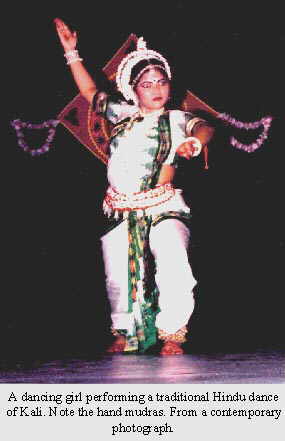 immemorial
been attributed by occultists to metaphysical forces are actually true in
fact. The subtle senses of the skin are ultra sensitive to thought and emotional
force emission whether from an internal or an external source. The belief
that when the right eye twitches means that "someone is thinking of you,"
reveals a basic occult truth often derided by skeptics.
immemorial
been attributed by occultists to metaphysical forces are actually true in
fact. The subtle senses of the skin are ultra sensitive to thought and emotional
force emission whether from an internal or an external source. The belief
that when the right eye twitches means that "someone is thinking of you,"
reveals a basic occult truth often derided by skeptics.
The sensitivity of our skin differ in the various parts of our body. The fingertips and mucous membranes, as an example, are more sensitive than most parts of the physical structure. According to embryologists, our skin is sensitive to light and is convertible to sight receptors. They explain that small cells, called ocelli, are to be found all over the skin, and that these cells resemble miniature eyes. Among the body parts that are sensitive to light are the forehead, chest, cheeks, temples, and hands. It is no wonder that some people are said to have the unusual ability to sense colors or even "read" words through their fingertips.
There is an amazing soothing power in the hands. We often use it to comfort and delight another by touching, caressing, and stroking. We please and tease our loved ones with our playful fingers. In romance the touch of the hand is as essential as the kiss. In Act II, Scene II of "Romeo and Juliet," a famous Shakespearean play, the young Romeo while admiring Juliet from afar wishes that he were a glove on her hand caressing her cheek:
"See how she leans her cheek upon her hand!
O that I were a glove upon that hand,
That I might touch that cheek!"
Human hands are fascinating, enchanting and evocative. They often fill us with wonder with their beautiful or repulsive appearance. The pioneer of modern western palmistry, d'Arpentingny, expresses it eloquently :
"there are hands which naturally attract us, and there are hands which excite in us repulsion. I have seen hands which seemed covered with eyes, so sagacious and so penetrating was their experience. Some, like those of the sphinx, suggest an idea of mystery; some betray recklessness and strength, combined with activity of body, others again indicate laziness and cunning."
 Doctors and
scientists have recorded the fact that the lack of touch--of fondling, petting,
and caressing of babies and children cause them to suffer psychologically
and physically--their emotional condition being affected even in their adult
years. Children are most vital and healthy when exposed to an affectionate
dose of touch. Generally, children who receive more hugs from their parents
grow taller and more intelligent than those who do not. Autistic children
who are disturbed, withdrawn, and frightened respond to hugs and caresses
more readily than they do to any cold clinical treatments. The loving touch
is therapeutic and can be more potent than pranic or Reiki healing treatments
that are apathetically and mechanically given.
Doctors and
scientists have recorded the fact that the lack of touch--of fondling, petting,
and caressing of babies and children cause them to suffer psychologically
and physically--their emotional condition being affected even in their adult
years. Children are most vital and healthy when exposed to an affectionate
dose of touch. Generally, children who receive more hugs from their parents
grow taller and more intelligent than those who do not. Autistic children
who are disturbed, withdrawn, and frightened respond to hugs and caresses
more readily than they do to any cold clinical treatments. The loving touch
is therapeutic and can be more potent than pranic or Reiki healing treatments
that are apathetically and mechanically given.
We often wonder why without the touch of loving hands we find our lives empty, meaningless, and burdensome. We seem to lose a sense of purpose, enthusiasm, and self-motivation. Metaphysics has an explanation: energy when imbued with a certain characteristic becomes a force that when emitted from a person may cause changes in the ambient surroundings. When such a force is tinged with the power of love and affection it uplifts all that it comes into contact with. Human beings, animals, and even objects that receive such a force are transformed and ennobled. This is the reason why it is always preferable to return love for hatred, and affection for anger. Whatever we touch ought to come from our hearts.
The human touch, affectionately given, also help to anchor or ground the consciousness of those who are psychologically disturbed to the physical plane and prevent hallucinations from taking place. Sensory input through the tactile sense is vital for a balanced mind. Adults as well as children require it to maintain sanity.
The handshake or a pat on the back from a friend is always reassuring--especially when it comes from one's Guru. In a stressful period of life a massaging hand on the shoulder does wonders to relieve loved ones of tension and cause them to relax. The touch is truly magical when we consider how a mother comforts her innocent babe with the touch of love. In this respect if animals had hands they would certainly use them to express affection just as humans do. Lacking them, snouts and beaks are employed instead. Some of course, are able to use their cute and sometimes deadly paws.
In many cultures the handshake as a traditional custom originated with the
intention of showing that no weapons were held concealed in the hand and
that the two persons involved in the handshake did so in peace and friendship.
Hands behind the back or hidden in pockets have always been regarded with
suspicion. To the knowledgeable, the handshake reveals a lot about a person's
characteristics. The firm, strong grip often indicates someone who is willful,
determined, and disciplined--all leadership qualities. Weak grips naturally
denote weak natures. Gentleness, enthusiasm, energy, clumsiness, self-confidence,
inferiority complexes, etc.--all these may be sensed by the power of the
grip, the vigor in which the hand is shaken, the length of time in which
the hand is held, and the jerks and movements that it
makes.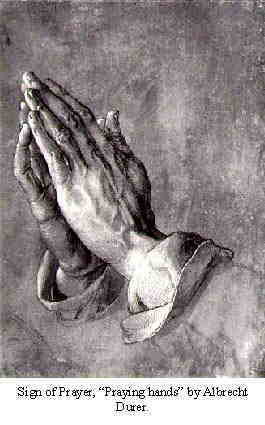
Hands are applied for various purposes in daily life. They are used for eating, cleansing, working, creating, worshipping and expressing oneself. Man instinctively clasps his hands in prayer--a very significant mudra that has the power to intensify inherent energies and may cause precipitations to take place on the physical plane.
Ever since bygone days, hands have been used as a calculating device. The simple counting of the fingers was a universal method applied in primitive times. Our most used modern method of computation utilizes the base of 10. This is derived from the ancient usage of the ten finger-digits in calculations. Complex systems of counting have been devised using the appendages of the hand. Javanese mystics, for instance, have unique formulas to calculate certain life's cycles using only their fingers. Hand postures are sometimes used to represent numbers. These manual gestures for representing numeration have been chiefly employed in the past by the Romans and Greeks.
There are many functions of the hand that may not be replaced by robotics. No mechanical hand may ever offer the same dexterity, sensitivity, grace, and versatility as a natural hand would. It took millions of years for man's hands to evolve to its present state of perfection. Man may create machines to do the tasks normally done by his hands, but he will never replace them completely by his inventions, just as no supercomputer would ever match the intricacy of the human brain--not for a long time yet anyway.
Hands are used to communicate and reveal thoughts. We often use all sorts of gestures to emphasize or stress certain words, ideas and feelings that we wish to convey or project outwards. This is normally done unconsciously without any willful intent, executed through subconscious impulses; at times willfully, as for instance, the sign of hunger or thirst, or a "come here!" hand movement. A whole psychological branch of study has developed out of these gestures. As part of the study of "Body language," hand gestures have become an important subject in understanding the operations of the human psyche and human behavior.
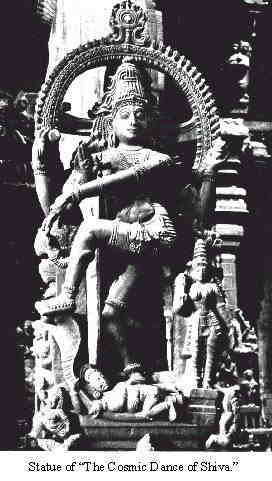 Sign language
uses the media of the hands in order to communicate. When forced to interact
with someone speaking a different language we often make use of signs. The
American Indians, for instance, developed their own forms of sign languages
to communicate with tribes not of their own native tongue. Things of nature,
ideas, emotions, and sensations all have their particular hand-sign. The
gestures that the American Indians possessed were elaborate enough to carry-out
a detailed non-verbal conversation. Other races or cultures have also developed
their own sign languages such as to be found in certain cultural groups in
Assam, Eastern India, and of the Aborigines in Australia. In modern times
manual gestures have been developed for the deaf.
Sign language
uses the media of the hands in order to communicate. When forced to interact
with someone speaking a different language we often make use of signs. The
American Indians, for instance, developed their own forms of sign languages
to communicate with tribes not of their own native tongue. Things of nature,
ideas, emotions, and sensations all have their particular hand-sign. The
gestures that the American Indians possessed were elaborate enough to carry-out
a detailed non-verbal conversation. Other races or cultures have also developed
their own sign languages such as to be found in certain cultural groups in
Assam, Eastern India, and of the Aborigines in Australia. In modern times
manual gestures have been developed for the deaf.
Aside from lip-reading, the deaf are often taught to communicate through definite forms, signs or poses of the hand. In this communications system, there are basically two types of signs: natural signs and systematic signs. Natural signs stand for objects and ideas whereas systematic signs stand for word-by-word or letter-by-letter renderings of the written language.
Among the disabled, the blind likewise benefit from their hands by reading words in Braille. In contemporary times, the hands are used extensively in the art and science of speed reading by those who seek to augment and optimize the volume of their reading input and comprehension ability.
Sign language has also been successfully used to communicate with animals--with the anthropoids in particular. It has been observed by researchers that apes have a large capacity to memorize and perhaps understand hundreds of signs representing abstract concepts.
The sensitivity of the fingers of the hands may be increased in order to sense colors and energies as alluded to above. Psychometry, for instance, is the occult art of reading energies in objects so as to uncover their personal history. This is especially done through the media of the hands. Impressions are received through the autonomic nervous receptors in the hands and conveyed to the brain for translation into images, thoughts and feelings. In yoga teachings, the term sparsha (lit. "touch") denotes superperception of the tactile sense, of which development is a by-product of meditation.
Hands are often used in healing. Perhaps one of the most famous mystical
brotherhoods of the past to apply the life energy emanating from the hands
therapeutically were the Rosicrucians. The members of this spiritual organization
practiced the "laying-of-hands" like their ancient counterparts, the Therapeutae
in Egypt and the Essenes that lived along the shores of the Dead Sea. In
past centuries, western occultists like Paracelsus and Anton Mesmer similarly
made use of this etheric nerve-energy emanating from the hands for healing
purposes, the latter calling it "animal magnetism." Ancient Greeks called
people who healed with the power of their hands, "cheirourgos," meaning
"hand-workers." The word "surgeon" is derived from this Greek term.
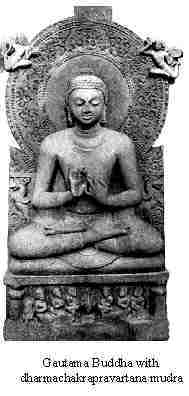 The ancient
Egyptians believed that the hands emanated a force filled with healing and
life-giving properties. They called this force sa-ankh. Other ancient
cultures called this power by various names. That man emanate energy from
the hands is the reason why some individuals are said to have "green thumbs,"
meaning that plants are sympathetic to such persons and the life-giving force
that they radiate and respond by growing healthy foliage and producing abundant
fruits. Everyone emanates magnetic rays from their hands and fingertips.
Healers naturally have a much more powerful flow.
The ancient
Egyptians believed that the hands emanated a force filled with healing and
life-giving properties. They called this force sa-ankh. Other ancient
cultures called this power by various names. That man emanate energy from
the hands is the reason why some individuals are said to have "green thumbs,"
meaning that plants are sympathetic to such persons and the life-giving force
that they radiate and respond by growing healthy foliage and producing abundant
fruits. Everyone emanates magnetic rays from their hands and fingertips.
Healers naturally have a much more powerful flow.
That power flows from the palms is recognized by the monks and priests of Buddhists monasteries in China in past centuries. Mainly used in therapeutics and the martial arts, "the Buddha Palm" as it is called, has found its way to our modern world and into the Occident.
Hands may be luminescent under the right conditions. The Jews have observed that the hands of holy people at prayer often become incandescent; Christians likewise believe that the fingertips of saints often shoot forth rays of light.
It is proven with modern Kirlian and high-frequency photography that the hands and physical body emits energy. These modern devices reveal indubitably in a concrete manner how we are surrounded by our own personal bioluminescent magnetic-field that otherwise may only be seen through etheric sight.
The human aura is generally heterogeneous in its various layers and sections. Each part of the body emanates a different force in accord with its state of vigor and vitality. The diverse energies of Man's aura, or bio-magnetic field may be detected through the hands. Negative, sickly, or congested energies in the aura may be sensed by the trained hands through the sensations of density, heat, coolness, electrical tingling, etc. In conjunction with this, the hands are also used to clear or balance energies in the aura. Hands are certainly great instruments used in most alternative therapies.
Why some are left-handed and not right-handed may seem a mystery to some. There are those who believe that this is inherited; however, this cannot be conclusively proved. A plausible answer from the metaphysical point of view, is that this is a karmic habit and is related to a past life injury upon the major hand. Incapacitated in the use of the right hand, the soul intelligence was forced to apply the minor hand in daily activities. This became habitual and was later carried over to a future incarnation where it still remained for the soul the hand of major use.
 In ceremonial
magick of the Western Tradition, the hands and fingers are used for various
purposes among which is to trace symbols, sigils, and signs in a consecrated
space or object. They are also utilized to banish, invoke and direct forces
to certain targets. In contrast to the adepts of ceremonial magic, stage
magicians apply the hands to entertain audiences with their many illusory
tricks. They call this, "prestidigitation," or "sleight of hand." In
prestidigitation, the hands are used in various ways to deceive and mislead
the eyes, and also in guiding the mental focus of the audience. The saying
that "the hands are quicker than the eye," is a well-known cliché
used by stage magicians.
In ceremonial
magick of the Western Tradition, the hands and fingers are used for various
purposes among which is to trace symbols, sigils, and signs in a consecrated
space or object. They are also utilized to banish, invoke and direct forces
to certain targets. In contrast to the adepts of ceremonial magic, stage
magicians apply the hands to entertain audiences with their many illusory
tricks. They call this, "prestidigitation," or "sleight of hand." In
prestidigitation, the hands are used in various ways to deceive and mislead
the eyes, and also in guiding the mental focus of the audience. The saying
that "the hands are quicker than the eye," is a well-known cliché
used by stage magicians.
While still on the topic of entertainment, we have to consider the applause. The clapping of hands in modern usage is an expression of delight, agreement, an accompaniment to music, or appreciation for someone's stage performance. Metaphysically, it is said that ovation dispels the presence of angelic beings. These creatures of light dislike the vibrations produced by the applause. From the occult point of view, therefore, clapping is regarded as a negative practice.
In dance, gestures of the hands are essential in conveying or expressing symbolic messages and metaphorical meanings. They possess a rich vocabulary and tell non-verbal stories that evoke our primordial emotions as well as divine sensations. This can easily be seen and experienced in the hula-dance of the Polynesians. These dances and hand movements narrate various myths of the land that transports us to another world. In Hindu classical texts regarding dance, hundreds of hand gestures are mentioned, together with descriptions of the thirteen positions of the head, thirty-six of the eyes, and nine of the neck. In the Hindu dances based on the Carnatic music composition, the following mudras are used among many others: Raaga mudra, Tata mudra, Aachaarya mudra, Naayaka mudra, Vamsa mudra, Biruda mudra, Lakshana Grantha mudra, Prabandha mudra, Sthala mudra, etc.
Although the many poses of the hands in traditional dance may portray symbolical meanings, they are also functional in the sense that they modify the morphogenic or auric field of the human organism, and likewise meant to regulate the energy flow within the etheric body.
There are numerous forms of dance or dancing style prompted by the various
levels of the psyche. Basically, we can classify three types of dance originating
from the subconsciousness, consciousness and the superconsciousness. The
instinctive or primitive dance originating from the subconsciousness is well
known and is displayed by both man and beast. Most of these movements and
their awkward gestures usually are mating courtship dances and the release
of pent-up
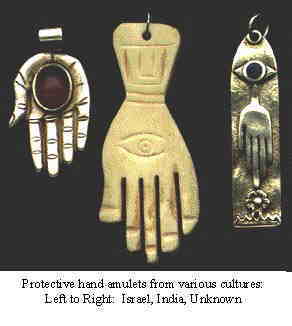 energies. Cultural
dances evolved from these unrefined movements. They are a projection of what
the psyche understands of beauty, grace, form, rhythm, etc. The third category
may be called mystical dances. They originate from higher levels of consciousness
beyond the reach of the conscious mind, but whose energies may be channeled
through the physical body producing divine movements. Some forms of dancing
are the amalgamation of all three classifications. The traditional dancing
styles of Eastern countries such as India, Thailand, and Indonesia are typical
of these. In these dances mudras are often formed to alter the consciousness
of the dancer and indirectly affect the consciousness of the spectators.
About 16 years ago the writer personally witnessed one of the traditional
Javanese dances performed by a very talented young man. The dance was called
"Kesadaran," or "Consciousness." We were spellbound from start to finish.
energies. Cultural
dances evolved from these unrefined movements. They are a projection of what
the psyche understands of beauty, grace, form, rhythm, etc. The third category
may be called mystical dances. They originate from higher levels of consciousness
beyond the reach of the conscious mind, but whose energies may be channeled
through the physical body producing divine movements. Some forms of dancing
are the amalgamation of all three classifications. The traditional dancing
styles of Eastern countries such as India, Thailand, and Indonesia are typical
of these. In these dances mudras are often formed to alter the consciousness
of the dancer and indirectly affect the consciousness of the spectators.
About 16 years ago the writer personally witnessed one of the traditional
Javanese dances performed by a very talented young man. The dance was called
"Kesadaran," or "Consciousness." We were spellbound from start to finish.
Music often make us move and sway our hands, feet, and body unconsciously. Why does it do this? For the simply reason that musical energies have the power to possess our beings and cause an altered state of awareness making us lose a certain degree of control over our physical motor system. All beings are susceptible to the influence of music. Animals and plants are especially vulnerable. In Greek myth we often hear tales of Pan, the personification of Nature, dancing to the mystical tunes of his pan-pipes, and all those who heard him play would also join in the fun, the mirth, and the merry-making. Similarly, when the Greek sage Orpheus played on his lyre, all became entranced, even the rocks listened attentively.
In the Hindu tales of the gods, as found in the Bhagavata-Purana and the Gita-Govinda, Krishna is said to have enchanted the gopis, or shepherdesses of Vrindavana with his lila dance and magical flute-playing. Each gopi was so mesmerized and distracted by Krishna that they would forget everything else around them. They would become so one-pointed that they would believe that they were the only one present before their Lord. Evidently, music has the power to cause ecstatic feelings.
 The god Shiva
is often portrayed in iconography in a dancing pose as Nataraja, or "Lord
of Dance." Representing the Consciousness aspect of Nature, why does Shiva
engage in a Cosmic dance? It is because Shakti or divine energy, flows through
his being and causes spasms and convulsions at first, and then rhythmic movements
in attunement with the beat of the Cosmos. Amidst spiritual flames, Shiva
dances rapturously, burning and transmuting all of the old outworn forms
of life hindering cosmic progress.
The god Shiva
is often portrayed in iconography in a dancing pose as Nataraja, or "Lord
of Dance." Representing the Consciousness aspect of Nature, why does Shiva
engage in a Cosmic dance? It is because Shakti or divine energy, flows through
his being and causes spasms and convulsions at first, and then rhythmic movements
in attunement with the beat of the Cosmos. Amidst spiritual flames, Shiva
dances rapturously, burning and transmuting all of the old outworn forms
of life hindering cosmic progress.
In a microcosmic scale, a Shiva-dance likewise occurs to a practitioner of mudras. Spontaneous dancing may transpire as a result of the awakening of the life-force in the lowest psychospiritual center of the etheric body. While conducting the mudras the practitioner's whole being would often move involuntarily. The physical body might sway forward and backward, left and right or rotate on its axis. His or her hands would move on their own accord in circles, in arches, in figure-eights, in a chopping upward-downward movement, or oscillate in a left-right or forward-backward direction; sometimes the hands are mysteriously placed at various layers of the aura, or even at certain focus points--at the chakras or energy centers of the body. While Shakti is active, she may also induce the practitioner to assume unlearnt mudras. The energies invoked through mudras have an intelligence all of their own and they do their work through movements. They know what to do to balance, purify, transform, or integrate celestial energies into the microcosmic system.
In the martial-arts field, hands are used as weapons of defense or destruction. The "Tiger's Claw," the "Iron Fist," "the Drunken-style Fist," etc, all indicate the manifold lethal forms that the hands may assume to strike an opponent or to ward off blows. In contrast to this, the finer arts make use of the hands constructively and creatively to produce wondrous objects of art, and to compose and produce heavenly music. Like the Cosmic dance of Shiva, the movements of Tai Chi, Pencak Silat, and other forms of self-defense have part of their origin in an awakened source of energy moving through the limbs producing involuntary movements. These movements were later noted down and turned into the various steps of martial art discipline and training.
Some systems of metaphysical development teach us to move the body in a certain way. Though this has an effect in stimulating energies in the body it is not quite as effective in producing the desired results as when compared to the assuming of mudras that cause the energies to produce natural movements all of their own accord.
When we clasp our hands by interlacing our fingers, the thumb at the uppermost,
whether right or left indicates which
 hemisphere
of our brain predominates. Psychology tells us that if the right thumb is
uppermost it is logic or reason that is predominant within us, or if the
left thumb, intuition.
hemisphere
of our brain predominates. Psychology tells us that if the right thumb is
uppermost it is logic or reason that is predominant within us, or if the
left thumb, intuition.
The hands play an important role in empowering the mind to function optimally. Since energy radiates from the palms and fingertips, they are often unconsciously utilized as stimulators re-connecting lost or poor links between synapses of brain neurons. In the book Body Magic, an important work on esoteric man, Benjamin Walker describes how the operations of the hands often attempt to improve the mental processes by certain placements:
"When the fingertips of the two hands are placed together, a circuit is set up with the brain that is believed to assist thought. People in deep thought will often talk with their fingertips pressed together, as if unconsciously aware of the need to establish such a current to assist their concentration. If a man wishes to recall something he has forgotten, his hand will instinctively touch his forehead to contact with his fingers the source of his thinking."
From what has been written thus far, it is evident that hands play a prominent role in everyday life. This can also be seen in the way we have invented all sorts of idioms regarding them. For instance, "lend me a hand," "hands-off," "hand-in-hand," "old-hand," "hands-on," etc.
The Application of Hands in the Spiritual Path
In the Spiritual Path hands are used for the following purposes:
As an instrument of healing
Chakras, or energy-centers are to be found all over the body. There is a
chakra to be found in each palm of the hand. There is likewise a minor chakra
at every fingertip. The size, activity, and power of these chakras are dependent
upon various factors. One of these is the purity of the subtle channels
terminating at those chakra points. These subtle channels or
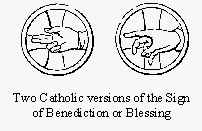 etheric nadis
convey the life-force all over the body and may be projected outside of the
body through the hand chakras. Healers of various metaphysical traditions
make use of the hands to convey healing energy or to break up toxic crystals
imbedded in the tissues. Since ancient times Chinese doctors have been diagnosing
a person's state of vitality through sensing the strength of the energy radiating
from the hands, from the phalanges of the fingers, and the pulse at the wrist.
Among the many systems of alternative therapeutics that make use of the hands
are acupressure, Shiatsu, Chakra healing, Reiki, Rosicrucian Contact healing,
Body Electronics, various forms of massage work, etc. Like Jesus the Christ,
every Initiate on the Spiritual Path is essentially a healer, though he may
not blatantly proclaim or advertise himself to be one. When circumstances
and necessity calls for it he would gladly offer his services to the suffering
one, always stressing, however, that it is not he that works, but the "Father
" within him.
etheric nadis
convey the life-force all over the body and may be projected outside of the
body through the hand chakras. Healers of various metaphysical traditions
make use of the hands to convey healing energy or to break up toxic crystals
imbedded in the tissues. Since ancient times Chinese doctors have been diagnosing
a person's state of vitality through sensing the strength of the energy radiating
from the hands, from the phalanges of the fingers, and the pulse at the wrist.
Among the many systems of alternative therapeutics that make use of the hands
are acupressure, Shiatsu, Chakra healing, Reiki, Rosicrucian Contact healing,
Body Electronics, various forms of massage work, etc. Like Jesus the Christ,
every Initiate on the Spiritual Path is essentially a healer, though he may
not blatantly proclaim or advertise himself to be one. When circumstances
and necessity calls for it he would gladly offer his services to the suffering
one, always stressing, however, that it is not he that works, but the "Father
" within him.
As an instrument of blessing and consecration
Metaphysics teaches and proves through various experiments which may be personally verified by skeptics that energy radiates from the hands. This energy may be used to magnetize objects, places, spaces or people for various purposes. The religious term for magnetization is consecration. Blessing is a form of consecration. It refers to the magnetization of a human being rather than an object with a spiritual force. Generally, in the act of consecration or blessing we seek to raise the vibrations or frequency of a person or an object, or to empower it with certain energies that would turn it into a psycho-spiritual generator that would influence its immediate surroundings in a certain way. Thought-forms imbued with mental suggestions and emotional power are often attached to these blessings. Curses operate much in the same way as blessings, they however, bring about negative effects. The curse on Tutankhamen's tomb is a classic example of this.
Where people are concern in the act of blessing, the metaphysical practitioner would also seek to clear obstructive or congested energies preventing the person from being aware of or communing with his or her Higher Self. Once this purification is achieved the person would possess a clearer line of communication with his hidden god or genius and acquire a stronger sense of protection, faith, and a constant guidance from the Most High.
In the act of blessing or consecration, the hands work in harmony with the power of the spoken word to modify the magnetic-field structure of people and objects.
As an instrument of general service
The hands are tools of service and humanitarian aid. Spiritually and socially, it is applied in extending a helping hand to our fellow beings, to those in need of bare necessities, comfort and solace. In spiritual teachings, karma yoga is often associated with the hands in active giving without any thought of remuneration or recognition. This is a vital principle. The desire to serve humanity must come from the heart without any thought of self or ego. Selflessness, self-sacrifice, and active service are important virtues that the spiritual aspirant has to embody and express at every breathing moment. When self-comfort, self-importance, and self-aggrandizement are the sole motives of help to others then the hands are misapplied and any act carried-out is unmeritorious. Spiritual disciples should not attract attention to the fact that they are serving. The best service is done quietly in the shadows without any fanfare or advertisements. The Master Jesus explained it concisely in this manner: "Do not let the left hand know what the right hand is doing." Occultly, the left hand is used for receiving energies, while the right hand is employed for giving them.
As an instrument of teaching
Spiritual Gurus teach in various ways. They give teachings orally, in writing,
telepathically, through example, symbols,
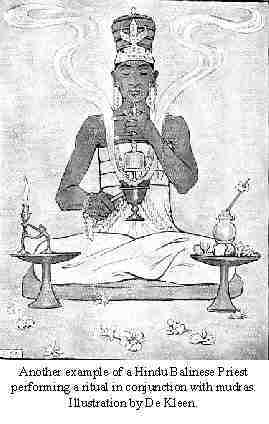 drama, and
by the use of gestures. The hands can convey lots of information when
knowledgeably used. Symbolic movements of the hands may portray the workings
of Cosmic laws and spiritual principles. It is said that a picture is worth
a thousand words. Sometimes the hands may tell what the mouth cannot. A loving
touch tells something that words are often unequipped to. In Zen Buddhism,
the Guru often gives shock treatments to his students with the use of the
hands. A rap on the head or a slap on the face at the appropriate moment
and psychological condition after intense meditation is supposed to cause
a student to suddenly apperceive the natural state of his mind and thereby
become enlighten.
drama, and
by the use of gestures. The hands can convey lots of information when
knowledgeably used. Symbolic movements of the hands may portray the workings
of Cosmic laws and spiritual principles. It is said that a picture is worth
a thousand words. Sometimes the hands may tell what the mouth cannot. A loving
touch tells something that words are often unequipped to. In Zen Buddhism,
the Guru often gives shock treatments to his students with the use of the
hands. A rap on the head or a slap on the face at the appropriate moment
and psychological condition after intense meditation is supposed to cause
a student to suddenly apperceive the natural state of his mind and thereby
become enlighten.
As an instrument of purification, invocation, prayer and communion
Perhaps the most common use of hands in religious and in metaphysical spiritual work is its application in prayer. Basically, this does not require any specialized knowledge. The hands are instinctively used when appealing to God, to higher intelligences for intercession or when used simply as gestures of adoration or reverence, just as we instinctively scratch our foreheads or pull our beards when we seek to arouse our mental powers. The hands may be clasped, outstretched or assumed in any other way that the heart dictates while in silent prayer. Esoteric teachings, however, teaches various mudras, or hand gestures that have specific purposes for the invocation of cosmic forces and spiritual beings. The liturgical formula "The Father, Son, and Holy Ghost, Amen" in the Christian Tradition accompanied with the touching of the appropriate points of the head and body at the conclusion of a prayer conveys a certain power to the etheric body when correctly done. However, the perfunctory manner in which it is performed provides very little of worth. In Hinduism, such placing of the hands upon certain parts of the body with magical intent is called Nyasa.
To commune with the divinity within us we may apply various mudras that facilitates mystical communion. Mudras establishes a psychic condition in the mind and body that temporary elevates our consciousness, and disperses the etheric webs that protects the psyche from being prematurely bombarded by psychic/celestial energies. It aligns and unites our objective consciousness with the superconscious mind. An altered state of consciousness is easily achieved through the use of the hands in the performing of mudras. Through mudras our communion with the so-called supernatural is controlled. We open and close the portals to higher worlds through the application of our will.
In ceremonial magick the hands are extensively used to direct and build up
forces in one's sacred place of worship and
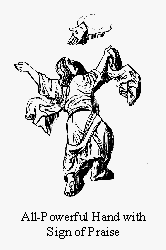 practice. Symbols
are drawn on the ground or in the air with the power radiating from the hands
and chakras to invoke and evoke cosmic metaphysical forces. The avatar Sai
Baba is often seen making gestures in the air. He does this for the purpose
of dispersing and cleansing the ambient surroundings and atmosphere from
negative energies. The metaphysical practitioner or ceremonial magician makes
use of the hands in manifesting certain things and conditions.
practice. Symbols
are drawn on the ground or in the air with the power radiating from the hands
and chakras to invoke and evoke cosmic metaphysical forces. The avatar Sai
Baba is often seen making gestures in the air. He does this for the purpose
of dispersing and cleansing the ambient surroundings and atmosphere from
negative energies. The metaphysical practitioner or ceremonial magician makes
use of the hands in manifesting certain things and conditions.
To conclude this article we would like to praise the hands for what they offer us--the opportunity to grow and serve. The fingers and thumbs of the hands should not quarrel among themselves as to who is the greatest, as related in some ancient fables, for they all have their place in supporting the need in us to further pursue our dreams, in fulfilling our earthly tasks and cosmic mission. The harmonious conjoined functioning of the fingers and thumbs of the hands is a metaphor for the right relationship and cooperation between the sons of men to manifest the Will of God, just as the fingers and hands manifests the will of its possessor. The noblest use of our hands is to extend it in friendship, in kindness and in unconditional love.
****************
Copyright © 2001 Luxamore
We thank you for the purchases of the items made from
our website as the proceeds from these help us to maintain our website and
to continually update it with new informative articles.
Pronunciation Guide to the
Mantras/Prayers/Chants
A = Ah as in father
C = Ch as in choose
E = a as in pay
G = Gh as in grape
I = ee as in tree
U = oo as in tool
Letters not mentioned are pronounced as in the English
language.
For orders, price list, or inquiries please,
If you would like to be on our mailing list to |